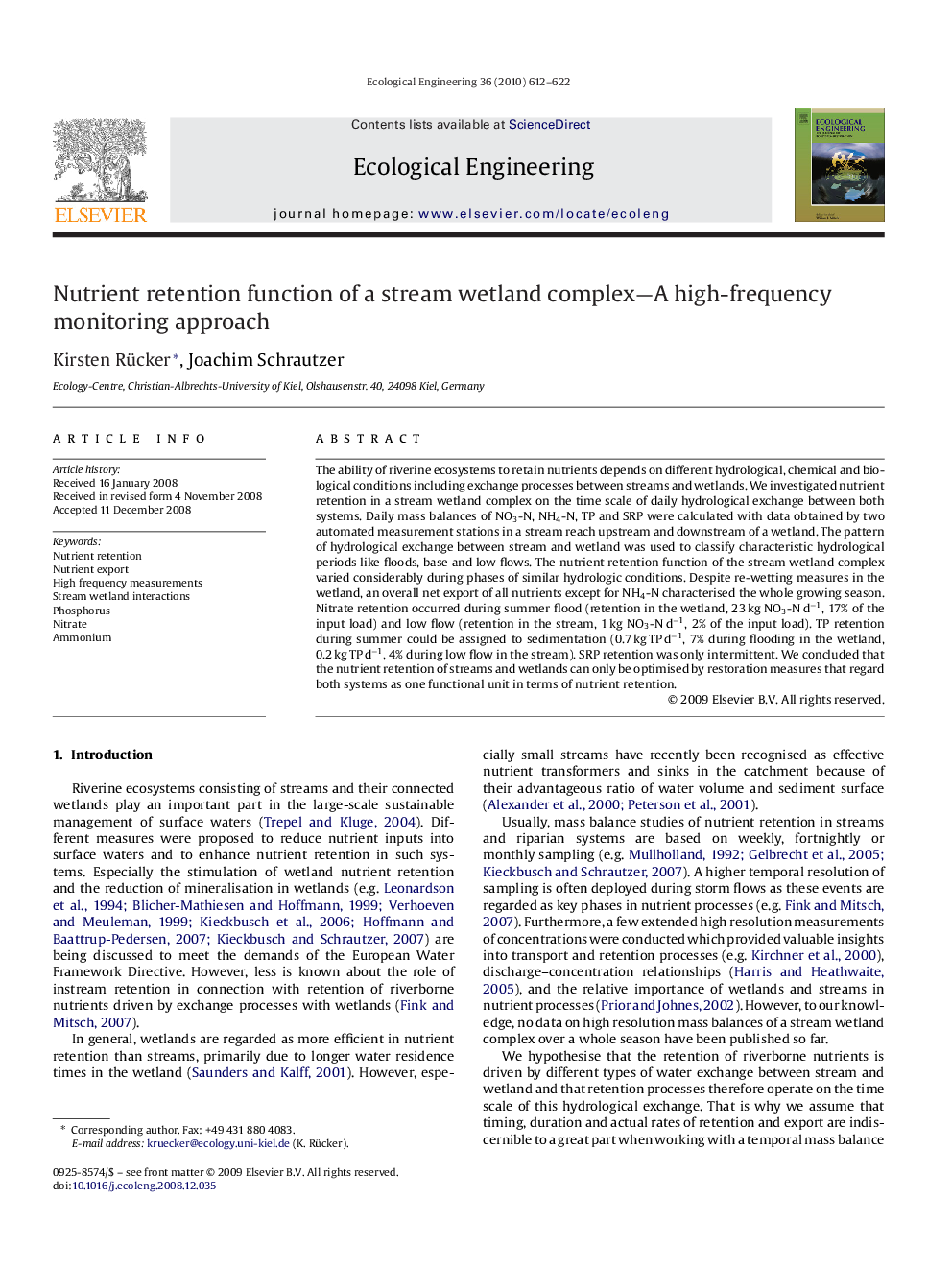| Article ID | Journal | Published Year | Pages | File Type |
|---|---|---|---|---|
| 4390626 | Ecological Engineering | 2010 | 11 Pages |
The ability of riverine ecosystems to retain nutrients depends on different hydrological, chemical and biological conditions including exchange processes between streams and wetlands. We investigated nutrient retention in a stream wetland complex on the time scale of daily hydrological exchange between both systems. Daily mass balances of NO3-N, NH4-N, TP and SRP were calculated with data obtained by two automated measurement stations in a stream reach upstream and downstream of a wetland. The pattern of hydrological exchange between stream and wetland was used to classify characteristic hydrological periods like floods, base and low flows. The nutrient retention function of the stream wetland complex varied considerably during phases of similar hydrologic conditions. Despite re-wetting measures in the wetland, an overall net export of all nutrients except for NH4-N characterised the whole growing season. Nitrate retention occurred during summer flood (retention in the wetland, 23 kg NO3-N d−1, 17% of the input load) and low flow (retention in the stream, 1 kg NO3-N d−1, 2% of the input load). TP retention during summer could be assigned to sedimentation (0.7 kg TP d−1, 7% during flooding in the wetland, 0.2 kg TP d−1, 4% during low flow in the stream). SRP retention was only intermittent. We concluded that the nutrient retention of streams and wetlands can only be optimised by restoration measures that regard both systems as one functional unit in terms of nutrient retention.
